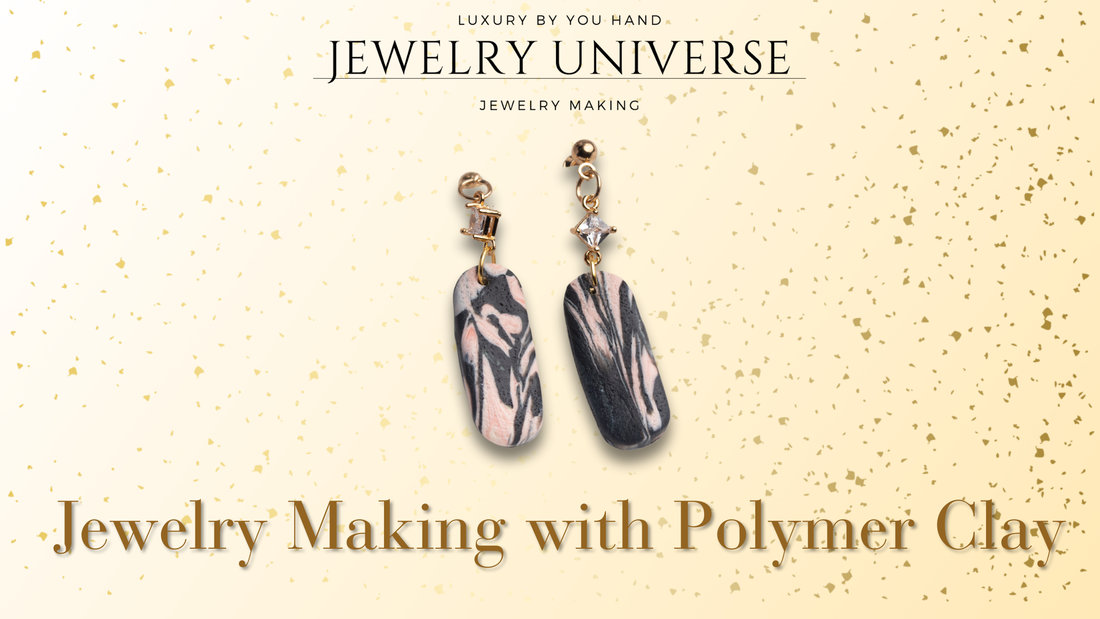
Master the Art of Jewelry Making with Polymer Clay
Share
Polymer clay is an exceptional material for jewelry crafting due to its versatility and durability. Some key benefits include:
- Wide range of colors that can be mixed to create custom shades.
- Easy to sculpt into intricate designs.
- Hardens permanently after baking, ensuring lasting quality.
Comparisons with Other Materials
Unlike metal or wood, polymer clay is lightweight and doesn’t require specialized tools for shaping. This makes it a popular choice for both beginners and experienced jewelry makers.
Essential Tools for Polymer Clay Jewelry
Basic Tools to Get Started
Crafting jewelry with polymer clay requires only a few essential tools:
- A rolling pin or pasta machine to flatten the clay evenly.
- Sharp blades or cutters for precise shapes.
- A baking surface and oven to cure the clay.
Advanced Tools for Detailed Work
For intricate designs, consider adding:
- Texture stamps to imprint patterns on the clay.
- Sandpaper or polishing pads for smooth finishes.
- A rotary tool for drilling small holes for hooks or clasps.
Preparing Your Workspace
Setting Up a Safe and Organized Space
Creating polymer clay jewelry requires a clean, flat surface to work on. Avoid using surfaces that come into contact with food, as clay residue may remain.
Tips for Efficient Crafting
- Use separate tools for cutting and shaping to keep the workspace tidy.
- Keep wet wipes handy to clean your hands and tools between colors to prevent contamination.
Techniques for Shaping and Sculpting Polymer Clay
Rolling and Conditioning the Clay
Before crafting, polymer clay must be conditioned by kneading or rolling to soften it. This ensures smooth application and prevents cracking during baking.
Creating Different Shapes
With polymer clay, you can make:
- Beads: Roll clay into balls or cylinders, then pierce holes using a needle tool.
- Pendant bases: Flatten clay and cut into desired shapes using cutters.
- Textures: Impress designs with household items like lace, leaves, or forks.
Baking Polymer Clay for Jewelry
Correct Baking Techniques
Baking polymer clay is crucial for solidifying your designs. Key tips include:
- Follow the manufacturer’s instructions for the correct temperature and time.
- Use a dedicated oven thermometer to ensure accuracy.
- Bake on a ceramic tile or parchment paper to prevent scorching.
Troubleshooting Common Issues
Cracks or discoloration may occur due to incorrect baking. Check the temperature carefully and avoid overhandling the clay before curing.
Adding Finishing Touches to Your Jewelry
Sanding and Polishing
After baking, sand the surfaces of your pieces with fine-grit sandpaper to remove imperfections. Polishing adds a glossy finish for professional-looking results.
Adding Varnish or Glaze
Use a polymer clay-compatible varnish to protect your designs and add shine. Matte or glossy finishes can transform the overall look of the jewelry.
Exploring Advanced Polymer Clay Jewelry Designs
Techniques for Intricate Patterns
- Millefiori Technique: Stack and slice layers of clay to create colorful patterns.
- Caning: Create complex patterns within a log of clay and slice it into thin segments.
Combining with Other Materials
Polymer clay pairs well with metals, beads, and cords. Adding these elements can create mixed-media designs that stand out.
Ideas for Polymer Clay Jewelry
Earrings and Pendants
- Sculpt lightweight dangling earrings with abstract shapes or floral designs.
- Create statement pendants by embedding small gemstones into the clay.
Rings and Bracelets
- Design unique chunky rings with marbled or ombré effects.
- Craft bangle bracelets by wrapping thin clay strips around a sturdy base.
Tips for Beginners in Polymer Clay Jewelry
Starting with Simple Projects
Beginners should focus on straightforward designs like round beads or basic pendants. These projects build confidence while teaching essential techniques.
Learning from Mistakes
Experimenting is part of the process. Embrace imperfections and refine your skills with practice.
Caring for Polymer Clay Jewelry
Cleaning and Storing
- Wipe pieces gently with a damp cloth to remove dust or dirt.
- Store in a cool, dry place away from direct sunlight to prevent fading.
Avoiding Damage
Polymer clay jewelry is durable but can chip if dropped. Handle pieces with care, especially if they feature intricate details.
Selling Your Polymer Clay Jewelry
Creating an Online Presence
Platforms like Etsy or Instagram are ideal for showcasing handmade polymer clay jewelry. Post high-quality photos and descriptions that highlight the unique features of your pieces.
Packaging and Branding
Use eco-friendly packaging and include thank-you notes or care instructions to leave a lasting impression on customers.
Current Trends in Polymer Clay Jewelry
Popular Designs
- Bold, geometric earrings in vibrant colors are trending.
- Minimalist styles with soft, neutral tones appeal to a wide audience.
Customization Options
Offer personalized options, like initial pendants or birthstone designs, to attract more customers.
Creating jewelry with polymer clay is an accessible and rewarding hobby that allows for endless creativity. By mastering the basics and experimenting with advanced techniques, you can design stunning, one-of-a-kind pieces that reflect your personal style.
